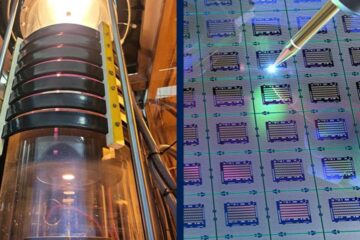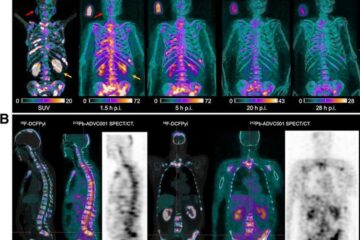Safe, simple eye test may help save lives by preventing stroke

A simple eye test may someday offer an effective way to identify patients who are at high risk for stroke, say researchers at the University of Zurich. They showed that a test called ocular pulse amplitude (OPA) can reliably detect carotid artery stenosis (CAS), a condition that clogs or blocks the arteries that feed the front part of the brain. It's a known risk factor for stroke.
The OPA test could be performed by ophthalmologists – physicians who treat eye diseases – during routine exams. The study, which is published in the June issue of Ophthalmology, the journal of the American Academy of Ophthalmology, confirmed that patients who had the lowest OPA scores also had the most seriously blocked arteries.
Each year, approximately 795,000 Americans suffer a new or recurrent stroke, and more than 137,000 of these people die as a result. People with severe CAS are much more likely to suffer stroke. Physicians would like to catch and treat CAS before that can happen, but because CAS has no symptoms and an efficient test is not currently available, the disease often goes undetected.
The Swiss research team used a device called the dynamic contour tonometer to check the OPA of 67 patients who were assumed to have CAS. The OPA score is calculated by finding the difference between the two pressure levels that occur inside the eye during the two phases of the heartbeat − the systolic and diastolic. The tonometer measures the two pressure levels, then instantly computes the patient's OPA score. When blood flow to the eye is blocked by CAS, there is not much difference between the two pressure levels, so the OPA score is low. The study confirmed that patients with the lowest OPA scores also had the most seriously blocked arteries. The researchers used ultrasound exams to corroborate that each study participant had CAS and to detail the severity of his or her blockage.
“Our results show that ocular pulse amplitude is a reliable, safe screening test for carotid artery stenosis,” said lead researcher Pascal Bruno Knecht, M.D. “We recommend further study to confirm the value of using OPA to detect and assess the severity of CAS and to define its use in stroke prevention.”
A research review performed for the U.S Preventive Services Task Force indicated that if an efficient screening test for CAS were available, the incidence of stroke and fatalities due to stroke could be substantially reduced. The review stated that the test should be able to detect clinically significant CAS, defined as 60 percent to 99 percent blockage of the carotid arteries. Some high-tech tests, such as magnetic resonance angiography and color duplex ultrasound, already meet this standard, but they are expensive and not widely available. Their primary use is in diagnosing patients who already have symptoms of stroke.
It could be efficient to perform the OPA test during a standard eye exam, if the ophthalmologist is already using the dynamic contour tonometer to screen for glaucoma. This type of tonometer is not widely used in the United States, although it is in Europe.
The researchers say that other than CAS, very few diseases could cause low OPA scores, and that an ophthalmologist could easily rule out these other diseases during an eye exam.
Note to media: Contact Media Relations to request full text of the study, arrange interviews with experts, and request images.
About the American Academy of Ophthalmology
The American Academy of Ophthalmology is the world's largest association of eye physicians and surgeons — Eye M.D.s — with more than 32,000 members worldwide. Eye health care is provided by the three “O's” – ophthalmologists, optometrists, and opticians. It is the ophthalmologist, or Eye M.D., who can treat it all: eye diseases, infections and injuries, and perform eye surgery. For more information, visit www.aao.org . The Academy's EyeSmart® public education program works to educate the public about the importance of eye health and to empower them to preserve their healthy vision, by providing the most trusted and medically accurate information about eye diseases, conditions and injuries. Visit www.geteyesmart.org to learn more.
About Ophthalmology
Ophthalmology, the official journal of the American Academy of Ophthalmology, publishes original, peer-reviewed reports of research in ophthalmology, including basic science investigations and clinical studies. Topics include new diagnostic and surgical techniques, treatment methods, instrument updates, the latest drug findings, results of clinical trials, and research findings. Ophthalmology also publishes major reviews of specific topics by acknowledged authorities.
Media Contact
More Information:
http://www.aao.orgAll latest news from the category: Health and Medicine
This subject area encompasses research and studies in the field of human medicine.
Among the wide-ranging list of topics covered here are anesthesiology, anatomy, surgery, human genetics, hygiene and environmental medicine, internal medicine, neurology, pharmacology, physiology, urology and dental medicine.
Newest articles

Silicon Carbide Innovation Alliance to drive industrial-scale semiconductor work
Known for its ability to withstand extreme environments and high voltages, silicon carbide (SiC) is a semiconducting material made up of silicon and carbon atoms arranged into crystals that is…

New SPECT/CT technique shows impressive biomarker identification
…offers increased access for prostate cancer patients. A novel SPECT/CT acquisition method can accurately detect radiopharmaceutical biodistribution in a convenient manner for prostate cancer patients, opening the door for more…

How 3D printers can give robots a soft touch
Soft skin coverings and touch sensors have emerged as a promising feature for robots that are both safer and more intuitive for human interaction, but they are expensive and difficult…





















